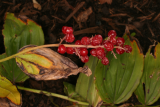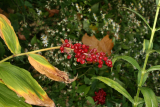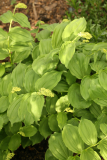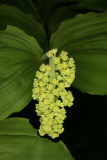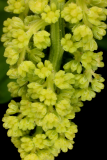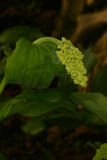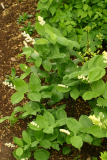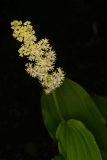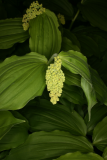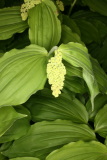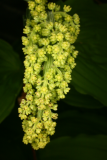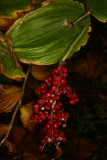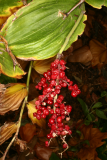Additional notes (click to expand)
Medicinal
MEDICINAL USES:
there have been many and varied claims about the therapeutic value of several Smilax species in the past 400 years, often unidentified, which continue to the present as generous beliefs unsubstantiated by preclinical or clinical evidence. Smilax spp as 'Sarsaparilla' are listed in the British Herbal Pharmacopoeia [1996] and are widely represented in the herbal and homeopathic pharmacopoeias of many other countries [Brayfield, 2014]. Preparations of the roots of several species boiled in water have been regarded as alteratives, anti-rheumatics, anti-pruritics, depuratives, diaphoretics and tonics; they are used as emetics in some countries at properly denied in others (Lindley, 1834; Christison, 1845; Flückiger and Hanbury, 1874; Tropical Plant Database; Barnes et al, 2007; Mabey R ed 1988; Winterbottom, 2015; Wild Plants of Malta). Others note their ‘acrimonious taste’ and a local narcotic action in the mouth that has been used in dentistry.
S. china, known as China Root (and other mislabelled species, including S. medicinalis and officinalis), was extensively imported to Europe as a treatment for syphilis, following the alleged beliefs of indigenous peoples of Central America [Ashburner, 1834; Lindley, 1834; Flückiger and Hanbury, 1874; Felter and Lloyd, 1898; Barnes et al, 2007; Winterbottom, 2105) but eventually fell out of fashion as its failure to cure such diseases was realised. It has also been claimed since the 17th century to be a treatment for gout by lowering the blood uric acid level. It remains in extensive use in Ayuverdic and Traditional Chinese Medicine as a 'Blood purifier' useful in rheumatism and such skin diseases as psoriasis as well as oedema, skin infections and strangury [van Wyk and Wink, 2004; Zhongzhen, 2004; Winterbottom, 2015].
Various flavonoids, glycosides, steroidal saponins, terpenes and other complex chemicals have been extracted from Smilax spp. roots and have been shown in in vitro,r in limited in vivo experiments and in weak clinical studies to display weak antibacterial, cytotoxic, uricosuric and other activities but not at concentrations that suggest potential therapeutic value [Demo et al, 1999; Barnes et al, 2007; Tropical Diseases Database]
In combinations with several other herbs ‘Sarsaparilla root (Smilax spp.) has a ‘Traditional Herbal Registration ‘ in the UK for the treatment of coughs and skin spots [British Herbal Pharmacopoeia]. It does not have such a registration in the European Union.
Nomenclature
Smilacina racemosa Desf. syn. Maianthemum racemosum (L.)Link Convallariaceae. False Spikenard, False Solomon's Seal, Scurvy berries, Treacle berries. Herbaceous perennial.
Oakeley, Dr. Henry F. (2013). Wellcome Library notes.
link
Synonym of Maianthemum racemosum
Plants of the World online, Kew Science http://www.plantsoftheworldonline.org/taxon/urn:lsid:ipni.org:names:538037-1
link
Other use
Smilacina racemosa Desf. syn. Maianthemum racemosum (L.)Link Convallariaceae. False Spikenard, False Solomon's Seal, Scurvy berries, Treacle berries. Herbaceous perennial. Distribution: North America. Probably introduced to England by John Tradescant the Younger in 1656 as it appears in his garden plant catalogue in Musaeum Tradescantianum in 1656. Austin (2004) reports on Native American traditional usage: a cold infusion of the roots was used for sore eyes (Cherokee); to stop bleeding of the lungs (Abenaki); and as an Infusion to wash back sores (Algonquin). Used after miscarriages, to kill tapeworms, to counteract poison, for rheumatism, externally on sore feet, and for snakebite (Iroquois); as an infusion for rashes and itch (Malecite and Micmac). Cough mixture (Mohegan). Poultice from roots for cuts, back pain, headaches, sore throat (Ojibwa). Revive comatose patients (Potawatomi). Eaten as potato after soaking in lye, parboiling and cooking (Ojibwa). Taste of treacle when ripe, but cathartic – eat with caution.
Oakeley, Dr. Henry F. (2013). Wellcome Library notes.
link
Geographical distribution
- Northern America, Eastern Canada
- Northern America, North-Central U.S.A.
- Northern America, Northeastern U.S.A.
- Northern America, Northwestern U.S.A.
- Northern America, South-Central U.S.A.
- Northern America, Southeastern U.S.A.
- Northern America, Southwestern U.S.A.
- Northern America, Subarctic America
- Northern America, Western Canada
Smilacina racemosa (L.) Link
Family: ASPARAGACEAEGenus: Smilacina
Species: racemosa (L.) Link
Common names: False Spikenard; False Solomon's Seal
Distribution summary: Northern America
Hardiness: H4 - Hardy; average winter
Habitat: Deciduous forests, damp, shady spots
Garden status: Not currently grown
Reason for growing: Medicinal, other use
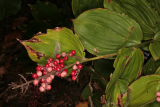
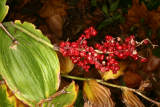
.JPG)
.JPG)
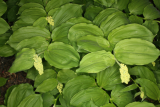
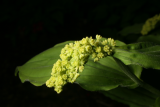
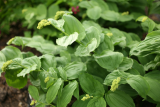
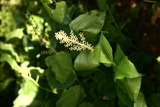
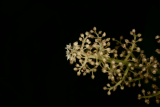



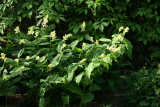
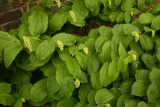
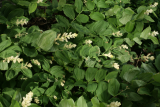
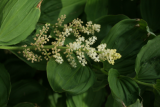
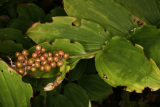
.JPG)
